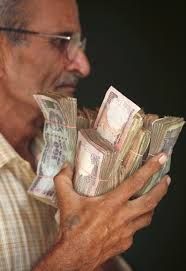 The economy is indubitably in a far better shape than on September 5, 2013, notes Indranil Sen Gupta
The economy is indubitably in a far better shape than on September 5, 2013, notes Indranil Sen Gupta
Governor Rajan has restored credibility to the rupee by buying forex like Governors Jalan and Reddy.
The much-awaited decision to issue FCNRB deposits with a concessional swap facility was announced the very evening he took over.
The economy is indubitably in a far better shape than on September 5, 2013 when Governor Rajan was appointed at the Reserve Bank of India.
The most dramatic shift has been the transformation of the rupee into a relative value trade from a Fragile Five currency.
Second, the adoption of ‘flexible’ inflation targeting will help to anchor inflation expectations.
Finally, we expect the RBI to cut policy rates by 50 basis points by early 2016 to support growth with CPI inflation well set on its ‘under-six per cent’ January 2016 mandate.
Governor Rajan has restored credibility to the rupee by buying forex like Governors Jalan and Reddy.
The much-awaited decision to issue FCNRB deposits with a concessional swap facility was announced the very evening he took over.
Within six months, FX investors in London were telling me that they had all gone long the rupee!
Aggressive FX intervention to build a 'bulletproof national balance sheet' has raised 'actual' forex reserves to about $340 billion pushing import cover, at around 8.6 months on March 2016 basis, above the eight months key to rupee stability.
(This assumes that the RBI allows banks to retain $10-15 billion for daily transactions and that NRIs pull out $15 billion when FCNRB deposits mature in September 2016.)
Not surprisingly, the rupee has marginally appreciated 2.3 per cent since September 4, 2013 in contrast to massive depreciations in Brazilian real (56.7 per cent) and Russian rouble (102.5 per cent).
We think Governor Rajan will continue to buy FX after capital flows resume.
Experience suggests that each round of volatility typically costs about $20 billion to tide over.
As our eight-month import cover works out to about $315 billion, the RBI can sell, say, $20 billion to defend Rs 65/$ allowing for seasonal weakness and global uncertainty.
This should anchor expectations at Rs 63-64/$ that Governor Rajan has indicated as fair value.
We would ideally like the RBI to have sufficient FX reserves to fight two spells of contagion.
We have welcomed Governor Rajan’s decision to adopt inflation targeting, although there are naturally teething troubles.
After all, inflation is a social injustice as the poor have no hedge against rising prices.
In any case, the people have always supported the RBI in fighting inflation from the days of Governor Rangarajan who broke the back of inflation driven by too much money chasing too few goods.
At the same time, the success of inflation targeting will critically depend on its flexibility given the rain and oil shocks that regularly hit inflation.
Looking ahead, we expect Governor Rajan to support growth by cutting rates by 25 basis points each on September 29 and in February.
After all, ‘imported’ inflation is now in check with commodity prices reined in by Fed hike expectations and the rupee stabilising with the RBI rebuilding FX reserves.
Just as importantly, Governor Rajan will need to inject $35 billion of ‘permanent’ liquidity, by March 2016, to fund a step up in growth to six per cent (in the old GDP series) from our estimated five per cent in the June 2015 quarter.
The image is used for representational purpose only. Photograph: Reuters
Indranil Sen Gupta is India economist at the Bank of America Merrill Lynch











